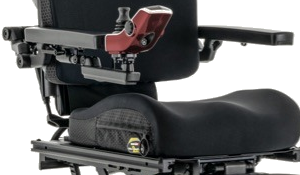It’s funny how the Christmas & Holiday season starts earlier and earlier every year. Traditionally, Thanksgiving Weekend was a kickoff to the holiday season: Black Friday shopping, Christmas Parades, Santa arriving at the shopping mall, and lighting the town’s Christmas tree all occurred that weekend. Now, holiday sales start weeks before Thanksgiving and its pretty common for folks to put their Christmas tree up early so their guests can enjoy it on Thanksgiving. Radios blast Christmas music before the leaves are raked and hauled away. Stores sport decorations and sell wrapping paper and tinsel in October and even September.
HQAA Blog
Zen & The Art of Hospice Contract Maintenance
There was a great book I read in either high school or college titled “Zen & The Art of Motorcycle Maintenance”. Written by Robert Pirseg, it was probably the first truly profound and deep reading I ever did – and it made a lasting impression on me. (Full disclosure: I read it twice in my life; both times were over 35 years ago and I have not re-read it since). The book told the story of a father and son crossing the country on a motorcycle. The motorcycle would break down or need some work or repair and the father son duo worked through it together.
Topics: Quality Care, Oxygen, Equipment
Helpful Resources: How the HQAA Website Can Be Your BFF
HQAA designed their application and accreditation processes to be user friendly. Achieving accreditation, especially for a new startup organization, can be stressful as a company navigates what can seem bureaucratic and complicated waters in pursuit of their accreditation. But, never fear: HQAA has set up easily accessible resources to smooth those processes and guide your organization.
Topics: Renewing Accreditation, HQAA Accreditation, HME Accreditation Requirements, Avoiding Deficiencies
When I was a kid—maybe 6th or 7th grade—I had a friend that could name all the states in alphabetical order. He also could name each state capital. Half a century later, after a career spent traveling the United States, I think I might be able to list them all if I could start with Maine and work geographically south and west visualizing a map. My friend was a pretty smart individual and is finishing up a stellar career as a cardiothoracic surgeon. I often wonder if he can still list the states like that in between heart valve replacement surgeries and repairing aortic aneurisms. And because that special talent so impressed me back in the day, I think about him and his high-intelligence parlor trick every time I see a map of the United States with the outline of states and the Crayola crayon rainbow of colors for each place.
Topics: DMEPOS, State Regulations
When It Absolutely, Positively Needs to Be There Overnight
In the late 1970’s, FedEx, a multi-national conglomerate company which specialized in global delivery services launched an advertising campaign that became their mission statement and philosophy. “When it absolutely, positively has to be there overnight” appeared in their print ads, their television and radio commercials, and on flyers, and signage in their ubiquitous storefront counters. The statement encapsulated the messaging from FedEx: if you can’t afford a delay, use us. FedEx would describe the tagline as “more than a slogan—it was a promise that demanded trust”. FedEx grew meteorically through the late 1970’s and into the 1980’s. Their brand remains today and they are synonymous with not only global delivery, but e-commerce business solutions.
Topics: Billing, Ventilator Unit, Retail, Delivery, Oxygen, Customer Service, Business Practices, Equipment, DMEPOS
Say Their Names: Identifying Officers & Titled Roles in Your DME
General Colin Powell once famously stated: “Organizational charts and fancy titles count for next to nothing”. Depending on the context or the situation, that may or may not be true. But with all due respect to General Powell, identifying certain titles and positions within your organization and pinning them on an accurate organizational chart is a necessary requirement and the basis of several accreditation standards. The standards require naming the actual persons and titles and reporting mechanism within your organizations.
“Morale” is defined as “the mental and emotional condition of an individual or a group with regard to a task or goal to be accomplished”. Good, positive morale by staff and team members is an essential component of any business plan. Bad, negative morale can ruin a team and literally destroy a business.
Complex or custom rehabilitation technology services are highly specialized services and products designed to assist patients with disabilities to help perform activities of daily living (ADL’s). In the DME world, in terms of DMEPOS, most of the equipment and supplies that fall into this category are used for mobility. Customized wheelchairs with specialized seating surfaces and controls are the products that are most commonly provided.
Topics: HQAA Accreditation, HME Accreditation Requirements, DMEPOS, Complex Rehab
As I get older, New Year’s Day has taken on a new and special significance. What used to be an excuse for a party has become an occasion for reflection, renewal, and improvement. And it seems as I get older, there’s more to reflect on and plenty of room for improvement!
Topics: Employee Training, HIPAA, Personnel Files, Quality Improvement, Billing, Compliance, Materials Management, Warehouse, Disaster Preparedness, Emergencies, Infection Control
A guy walks into a car dealership to buy a sporty import from Italy. The price tag is north of $100,000. The dealership says the car is coming from Italy and delivery can be in about 8 weeks. They take a sizeable down payment and order the car and do an admirable job of keeping the customer informed of the progress of the car’s journey from Northern Italy to the US and into the customer’s garage. There’s a slight delay, but the dealership keeps the customer informed and he’s happy to accept delivery of his dream car just over 9 weeks after the day he walked into the dealership.
Topics: Retail, Customer Service, Business Practices, Care Plan











